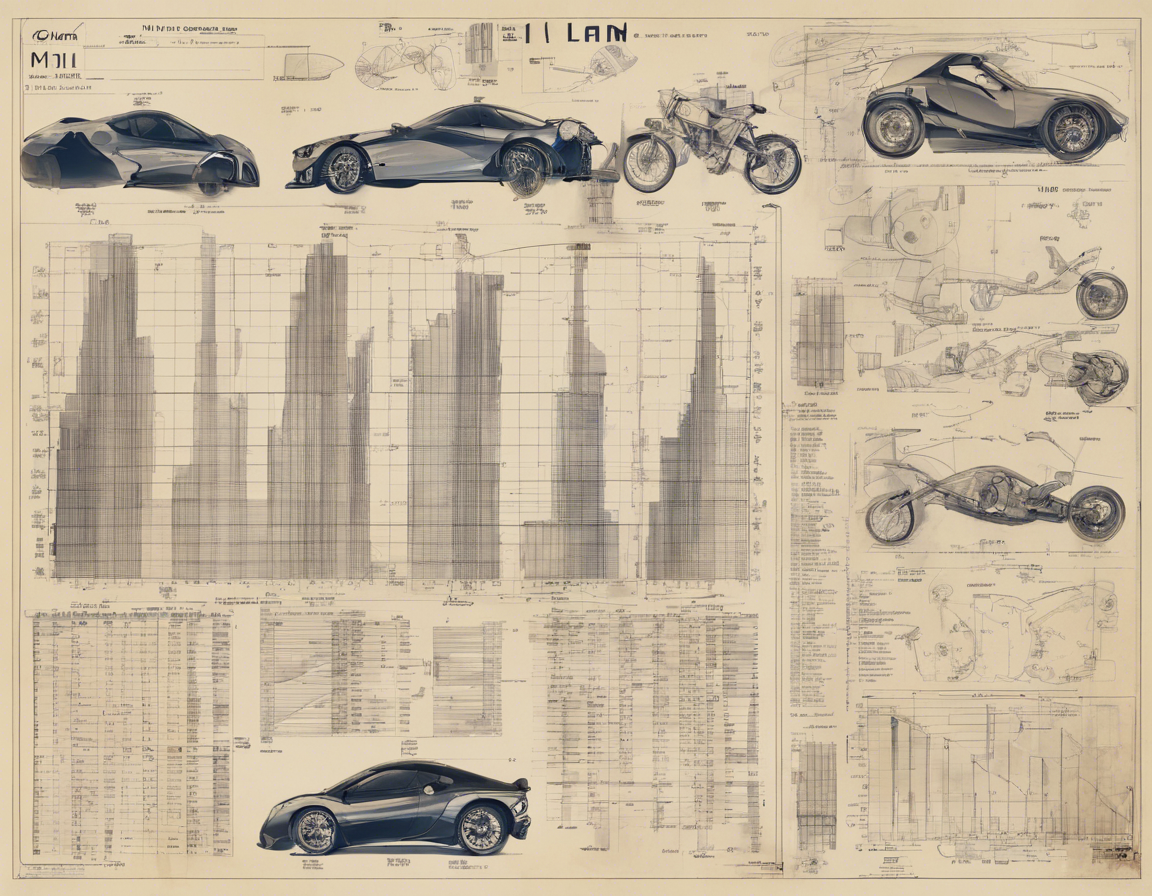Understanding the Milan Chart
Data visualization is a powerful tool that can transform complex information into easy-to-understand insights. One innovative method for visualizing data is the Milan Chart. Originally developed by Italian statistician Andrea Milan in the 1990s, the Milan Chart is a creative tool that allows for insightful analysis across various dimensions. In this article, we will delve into the intricacies of the Milan Chart, its components, applications, and how it can be leveraged for effective data analysis.
What is a Milan Chart?
At its core, a Milan Chart is a graphical representation of data that allows for the simultaneous visualization of multiple variables. It consists of a series of concentric circles or rings, with each ring representing a different variable or dimension of the data being analyzed. By plotting data points on the chart, analysts can quickly identify patterns, correlations, outliers, and trends across the various dimensions.
Components of a Milan Chart
The Milan Chart typically consists of the following components:
-
Concentric Circles: The concentric circles form the backbone of the Milan Chart, with each circle representing a distinct variable or dimension.
-
Data Points: Data points are plotted on the chart to represent individual observations or data values. The position of each data point relative to the center and the outer circles provides valuable insights into the relationships between different variables.
-
Annotations: Annotations, such as labels, legends, and color codes, can be used to provide additional context to the data points and help users interpret the chart more effectively.
-
Axes: While Milan Charts do not have traditional x and y axes, analysts can still use reference lines or axes to denote the values of each variable being visualized.
Benefits of Using the Milan Chart
The Milan Chart offers several key benefits for data analysis:
-
Multidimensional Analysis: By visualizing multiple variables simultaneously, the Milan Chart enables analysts to conduct multidimensional analysis and uncover complex relationships that may not be apparent in traditional two-dimensional charts.
-
Pattern Recognition: The concentric layout of the Milan Chart makes it easier to spot patterns, trends, and anomalies in the data, leading to more informed decision-making and insights.
-
Comparative Analysis: Analysts can compare data points across different dimensions quickly, allowing for efficient comparative analysis and data-driven decision-making.
-
Storytelling: The visual nature of the Milan Chart makes it an excellent tool for storytelling and presenting data-driven narratives to stakeholders, clients, or colleagues.
Applications of the Milan Chart
The Milan Chart has diverse applications across various fields, including:
-
Market Research: Market researchers can use Milan Charts to analyze consumer preferences, market trends, and competitive landscapes across multiple variables such as price, product quality, and brand reputation.
-
Financial Analysis: Financial analysts can leverage Milan Charts to visualize complex financial data, such as revenue streams, expenses, and profitability, to identify key drivers of financial performance.
-
Healthcare Analytics: Healthcare professionals can use Milan Charts to analyze patient data, treatment outcomes, and disease trends across different demographic and clinical variables, leading to improved patient care and outcomes.
-
Risk Management: Risk managers can employ Milan Charts to assess and visualize risks across multiple dimensions, such as likelihood, impact, and mitigation strategies, to develop more robust risk management frameworks.
Best Practices for Creating Milan Charts
When creating Milan Charts, it is essential to adhere to best practices to ensure clarity, accuracy, and effectiveness:
-
Select Appropriate Variables: Choose variables that are relevant to the analysis and align with the objectives of the chart. Avoid overcrowding the chart with unnecessary variables that may obscure key insights.
-
Use Consistent Scales: Maintain consistent scales across all variables to facilitate accurate comparisons and interpretations. Inconsistent scales can distort the visual representation of data and lead to misinterpretations.
-
Label Data Points: Clearly label data points to provide context and identify key observations or outliers. Use annotations, legends, or color codes to enhance readability and comprehension.
-
Iterate and Refine: Iterate on your Milan Chart design based on feedback, insights, and emerging patterns. Refine the layout, color scheme, and annotations to improve clarity and visualization effectiveness.
Frequently Asked Questions (FAQs)
- Can the Milan Chart accommodate more than three dimensions?
-
Yes, the Milan Chart can accommodate multiple dimensions, with each additional variable represented by an additional concentric circle.
-
How do you determine the position of data points on a Milan Chart?
-
The position of data points on a Milan Chart is determined by the values of the variables being visualized. Closer proximity to the center or outer circles indicates higher or lower values, respectively.
-
Are there software tools that can help create Milan Charts?
-
While there are dedicated software tools for creating Milan Charts, general-purpose data visualization tools like Tableau, Power BI, or Python libraries such as Matplotlib can also be used.
-
What are some common mistakes to avoid when creating Milan Charts?
-
Common mistakes include using inconsistent scales, overcrowding the chart with variables, omitting labels or annotations, and failing to iterate on the design for improved clarity.
-
How can Milan Charts enhance data storytelling and communication?
- Milan Charts offer a visually compelling way to present complex data, making it easier for stakeholders to grasp key insights, trends, and relationships at a glance, thus enhancing data storytelling and communication.
In conclusion, the Milan Chart is a versatile and powerful tool for multidimensional data analysis, offering unique insights and perspectives that traditional charts may not capture. By understanding its components, benefits, applications, and best practices, analysts can harness the full potential of the Milan Chart to drive informed decision-making, foster innovation, and unlock new opportunities for data-driven exploration and discovery.
